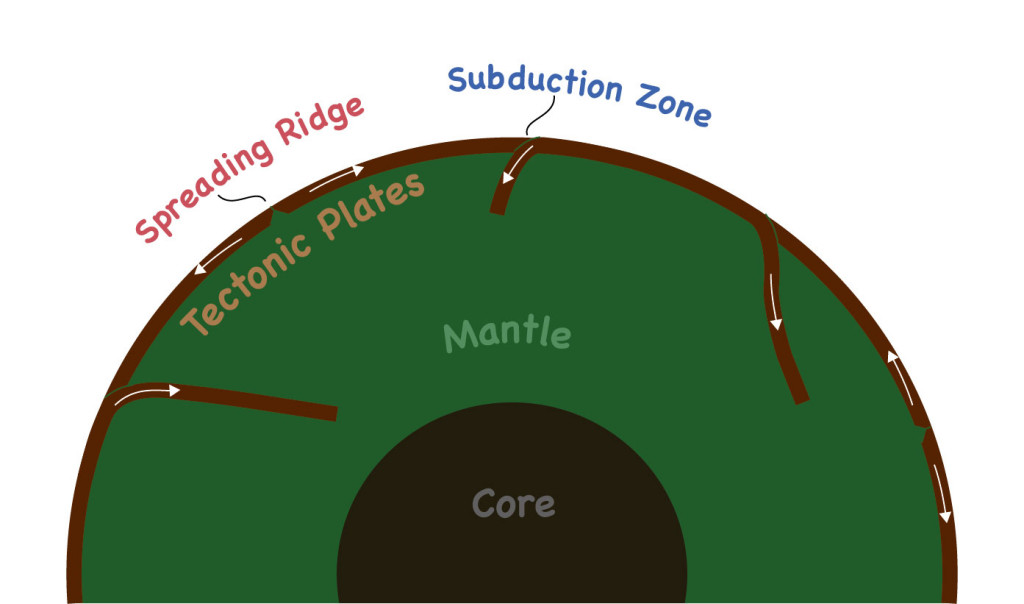Background
Background
Aim of the VoiLA project

The Earth has a hard outer shell which is broken into tectonic plates (like a broken eggshell). These plates move on the softer rock (the mantle) below. About 2/3 of these plates lie below the oceans. These plates soak up water. We want to find out is where this water goes when it is soaked up. When two plates meet, one of them (the denser one) will sink below the other into the softer, hotter rock below. This process is called subduction. Another question is what happens to the water in the sinking plate.
To do this, we will study the Antilles subduction zone
Why do we want to study the water in the plates?
The Earth was formed when lots of pieces of dust and rock flying around the early solar system collided and clumped together. These pieces also contained water which got trapped inside the newly formed planet. The hot Earth released the water through volcanic eruptions. This water formed our oceans and atmosphere and this then allowed life to develop. Since then, water keeps getting cycled into and out of the Earth by the tectonic plates
When a plate sinks back into the mantle (hot soft rock below), they take water they soaked up from the oceans along. Some of the water goes down with the plates to deep in the mantle, where it may drift for thousands of kilometers and not be seen back at the surface for many millions of years. However, a lot of the water that sits close to the top of the sinking plate gets squeezed out soon after the plate gets in contact with the hotter mantle, by the high pressure and temperatures. This water lowers the rocks’ melting point, leading to mantle melting, making magma. The magma rises up towards the surface taking the water along. If the magma can find a place to get out, it erupts. This makes a volcano. And the water in the magma forms bubbles, making this type of volcanoes particularly explosive and dangerous.
The Antillean islands are made of such volcanoes. Many other island chains (e.g., Indonesia, Japan) were also formed in this way. Without the water, these volcanoes and islands would not be there! Not all the Antillean islands are the same. Some are bigger, some have more active volcanoes, some have a history of larger earthquakes and others not. This probably is caused by how much water goes down with the plate and how much ends up in the magma. We want to study the water in the plate that subducts below the Antilles, because we want to understand why there are these differences between the islands.
Links
If you want to find out more about earthquakes and volcanoes in the Lesser Antilles, visit our partner’s website at the University of the West Indies. Or visit the Smithsonian Volcanism Program for an overview of the volcanoes, or the observatories on Montserrat, Martinique or Guadeloupe (last two in French) for current information on natural hazards on the islands.
Key words
Tectonic plate – a piece of the hard outer shell of the Earth.
Mantle – rocky part of the interior of the Earth. It sits below the tectonic plates, and above the metallic core. The mantle is hotter than the plates and therefore softer.
Subduction – When two tectonic plates converge, the denser one of the two will be forced below the other and start sinking into the mantle below. This process is called subduction. At the Antillean subduction zone, the dense old plate below the Atlantic ocean sinks below the smaller and lighter Caribbean plate.
Spreading ridge – Place where two tectonic plates diverge and new plate is formed. There is a spreading ridge in the middle of the Atlantic ocean. This is where the plate that subducts below the Antilles was formed.
Magma – molten rock below the surface. Lava – molten rock, once it has come out of a volcano.